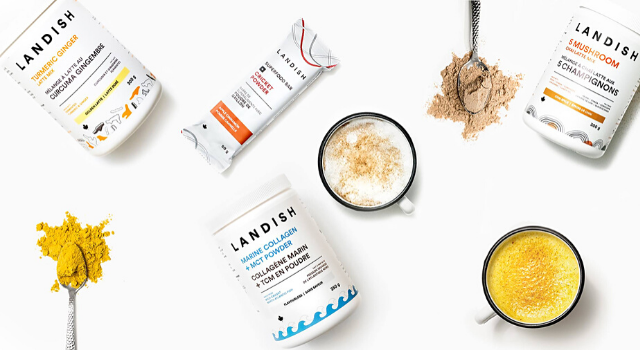Fat Bomb Popsicles for a ketogenic snack
As a busy mom, I like to simplify my life as much as possible. That includes what and how I eat. I follow a low carb high fat diet because it:
- keeps me going for hours without having to eat
- simplifies meal choices
- keeps me lean
- gives me energy
- cuts out brain fog
These are just a few obvious reasons. It’s also helped me naturally balance my hormones and the results show up in my regular blood test results. My HDL (good cholesterol) is great, liver and kidney function and ability to make human growth hormone (that’s the stuff that keeps you youthful).
This is why I do it. Yes, it’s not always easy but for me the benefits are too good to give up. And since I am fat adapted, if I have to change my diet for any reason such as holidays, I can easily switch back to it once I get home and have more control over what I’m eating. It’s a great tool and I never feel deprived.
What Happens in Your Body When You Eat Keto and Why It Is So Great For Health
What the ketogenic diet does is switch the body from burning glucose to burning fat. When the body burns fat, it starts to produce ketones which it then uses as fuel. When you burn ketones as fuel you are said to be in ketosis.
When I’m in ketosis, I eat a lot of fat. It keeps me full and free of cravings. Each person is different and how much they need to restrict their carbohydrate intake to get into ketosis varies depending on a person’s physiological makeup, stress and genes.
There are also different forms of ketogenic eating. I like to do it with whole foods and healthy fats. Kind of like Paleo but with more fat and much less maple syrup and sweet potatoes. In a nutshell, it’s far less carbohydrates, moderate protein and way more fat.
So how does the above combo trigger your body to start burning fat instead of glucose for energy? Bear with me while I delve into how the body functions on carbohydrates — which is likely the way your body is currently functioning.
Carbs from any source, vegetables, fruit, grains, sugar, anything starchy – are broken down into glucose which is used for energy. When you have more glucose than you need immediately, your body stores the excess in the liver and then the muscles as glycogen. This is the body’s first line of energy. This is what you use for short-burst physical efforts and for keeping certain systems such as the brain, kidney and red blood cells working efficiently all day. The glycogen stores in the liver can be utilized by the rest of the body but the glycogen in muscles is reserved for action in that particular muscle. When space for glycogen in the liver and muscles is full, glucose is converted to fat.
Glucose is the first source the body goes to when it needs energy. But we can only store a couple thousand calories of glucose (or glycogen when it’s stored) for use. It’s not sustainable energy which means you need to keep replenishing it by eating regularly throughout the day. Relying on glucose can prevent blood sugar levels to stabilize. Which means you may experience spikes when you eat and drops when you are hungry. This results in ongoing cravings and, you guessed it, contributes to weight gain. Excess glucose also converts to stored fat and triglycerides in the blood – which can put you at risk for heart disease.
Part two of this process involves insulin sensitivity. I’ve written previously about insulin sensitivity as a potential reason you can’t lose weight. Insulin is the hormone that balances blood sugar. It triggers the absorption of glucose by the liver, fat and muscle cells and lowers the level of glucose in the bloodstream a.k.a. blood sugar.
Insulin halts fat-burning so that the body can burn or store glucose that’s coming in. Once it’s handled, insulin levels drop and we go back to burning fat. Insulin also tells the brain that we are in need of food which then activates hunger signals.
When insulin sensitivity is balanced, these processes work efficiently to maintain stable and healthy blood sugar levels. But, when glucose is constantly too high in the body – when you are eating a lot of carbohydrates — it causes constant high levels of insulin. This is known as insulin resistance. Your cells don’t listen to insulin’s instructions anymore to absorb glucose so the glucose stays in the bloodstream and spikes.
Whew – you still with me?
The flip side is when things are functioning well, when the concentration of glucose in the bloodstream falls too low a hormone called glucagon is released. It stimulates the liver to convert stored glycogen into the blood stream. It also tells the body to start using the stored fuel source…you guessed it…fat! Using fat for fuel is called lipolysis. This means fatty acids are moved from fat cells and metabolized for energy.
When your body burns fat for fuel it creates ketone bodies. When you are in ketosis, you use ketone bodies for energy instead of glucose. Now the body does need glucose as well for red blood cells and brain function as well. But the body can actually create glucose on it’s own as well through a process called glucogenesis. This is when the liver turns amino acids and fatty acids into glucose. So really there is no need to eat carbohydrates.
This is where the fun part comes in! Switching your diet from using glucose as a fuel source to using fat as a fuel source. It can be challenging for some to make the switch as your body has to learn how and be supported to metabolize fat until it is happy to use fat over glucose as fuel.
However, once you hit nutritional ketosis you will likely find that your blood sugar and insulin levels drop and levels of HDL (good) cholesterol increase. Your body can then start to burn it’s stored fat along with the fat you eat. Which means you can start to lose weight! And that is even better for your health as it means less visceral fat around your vital organs, less chance of diabetes type 2 and less risk of heart disease.
And recall insulin sensitivity? On a ketogenic diet, insulin stabilizes and the fuel we need we already have on our person! Other benefits of being on a ketogenic diet include:
- naturally reduced appetite
- effortless weight loss
- improved mood
- ability to eat more without gaining weight
- lower and stable blood sugar
- fewer cravings
- lower blood pressure
- less brain fog
- improved sleep
- more energy
- reduction in gas and bloating
So many benefits to becoming fat adapted and eating low carb high fat! I’m holding a How to Get Fat Adapted Course in the fall. I will be offering it in person and a master class online. If you are interested send me an email at jill@nourishme.ca and I’ll be sure to add you to the list!

Jill Schmelke
Registered Holistic Nutritionist
Jill is a Vancouver-based mom, health researcher (MJ) and Holistic Nutritionist. Her passion is optimizing health and aging thru diet, supplements and lifestyle choices. Her goal is to share her knowledge and help others. Jill works with groups and on a one to one basis with clients.


